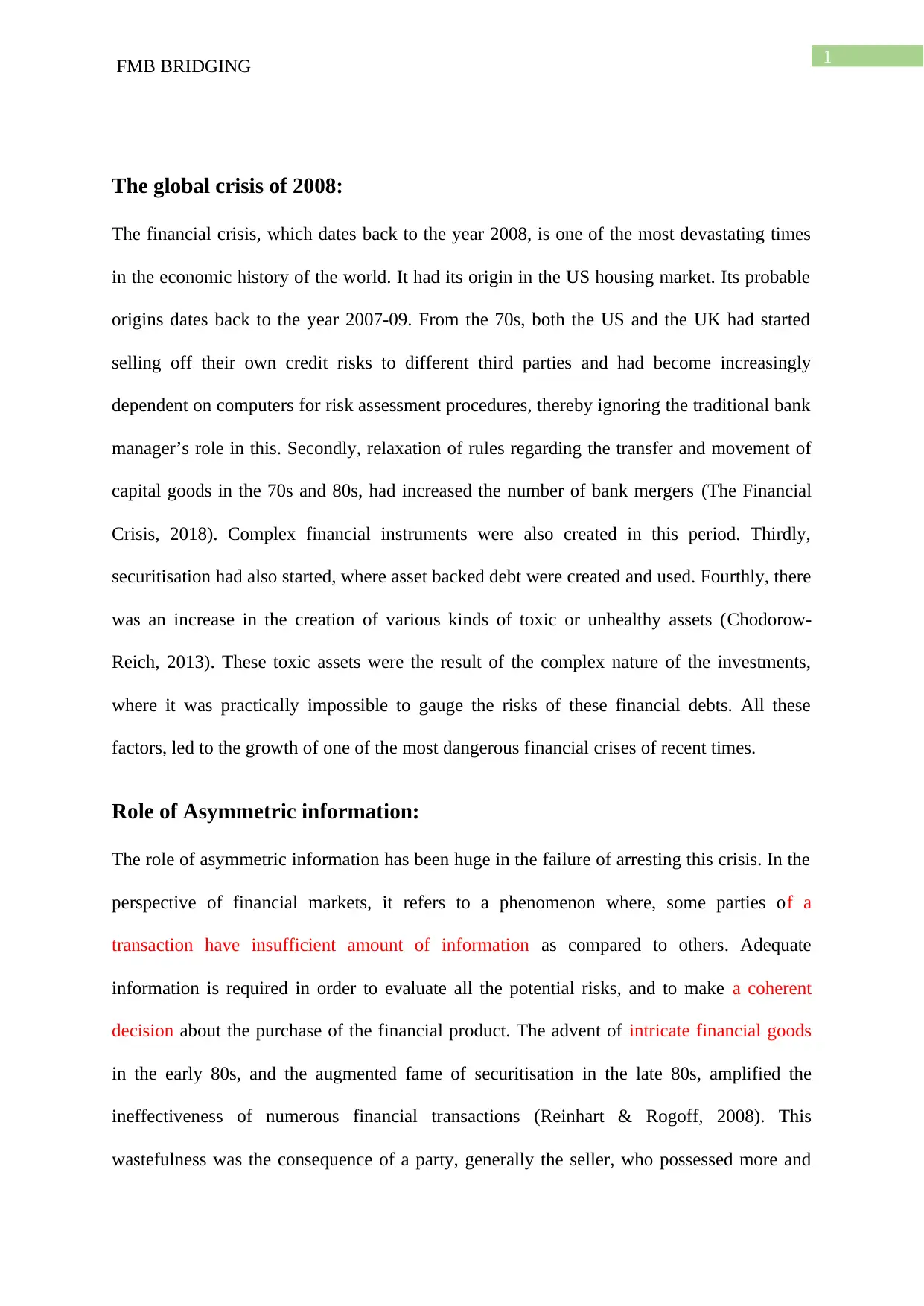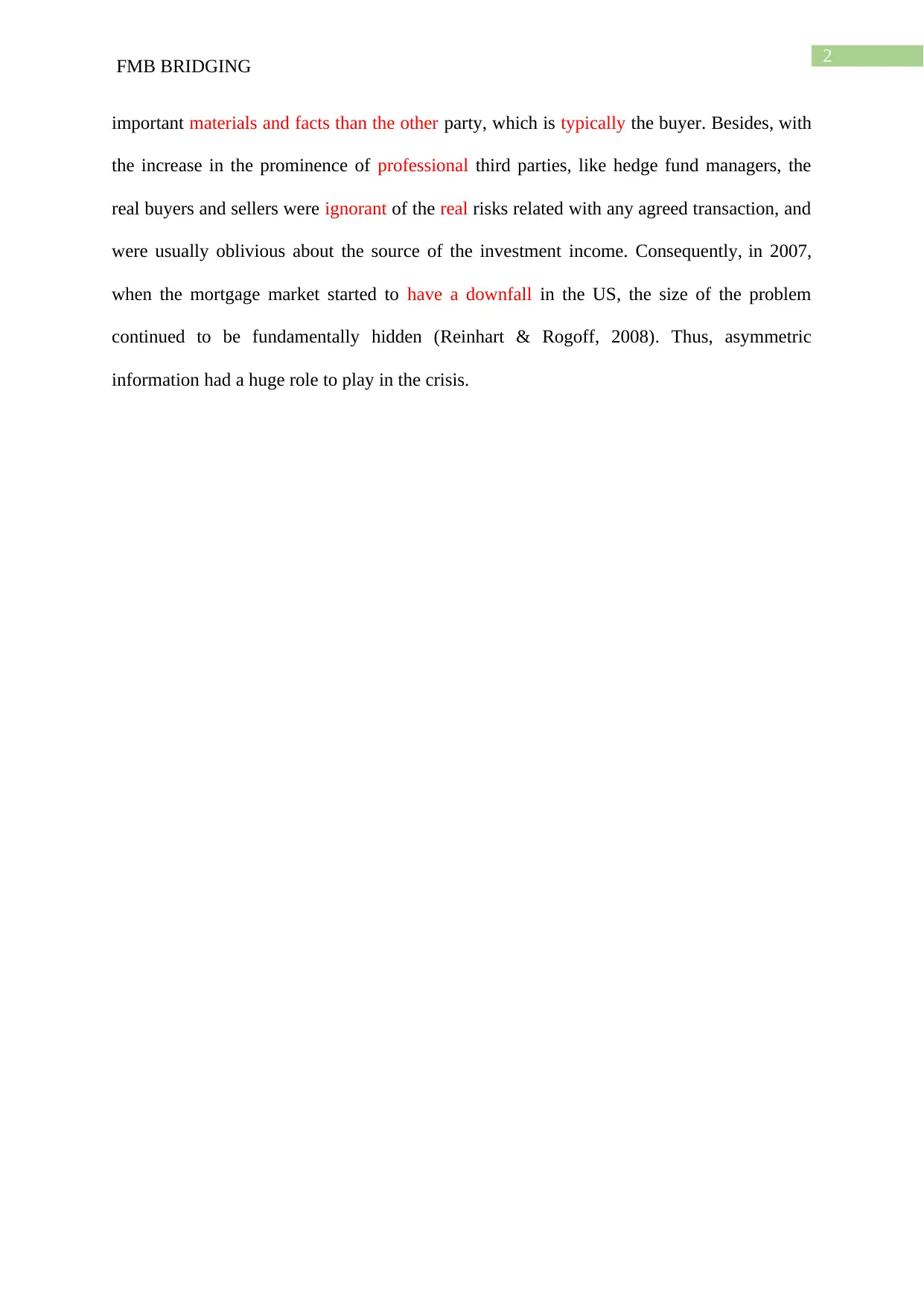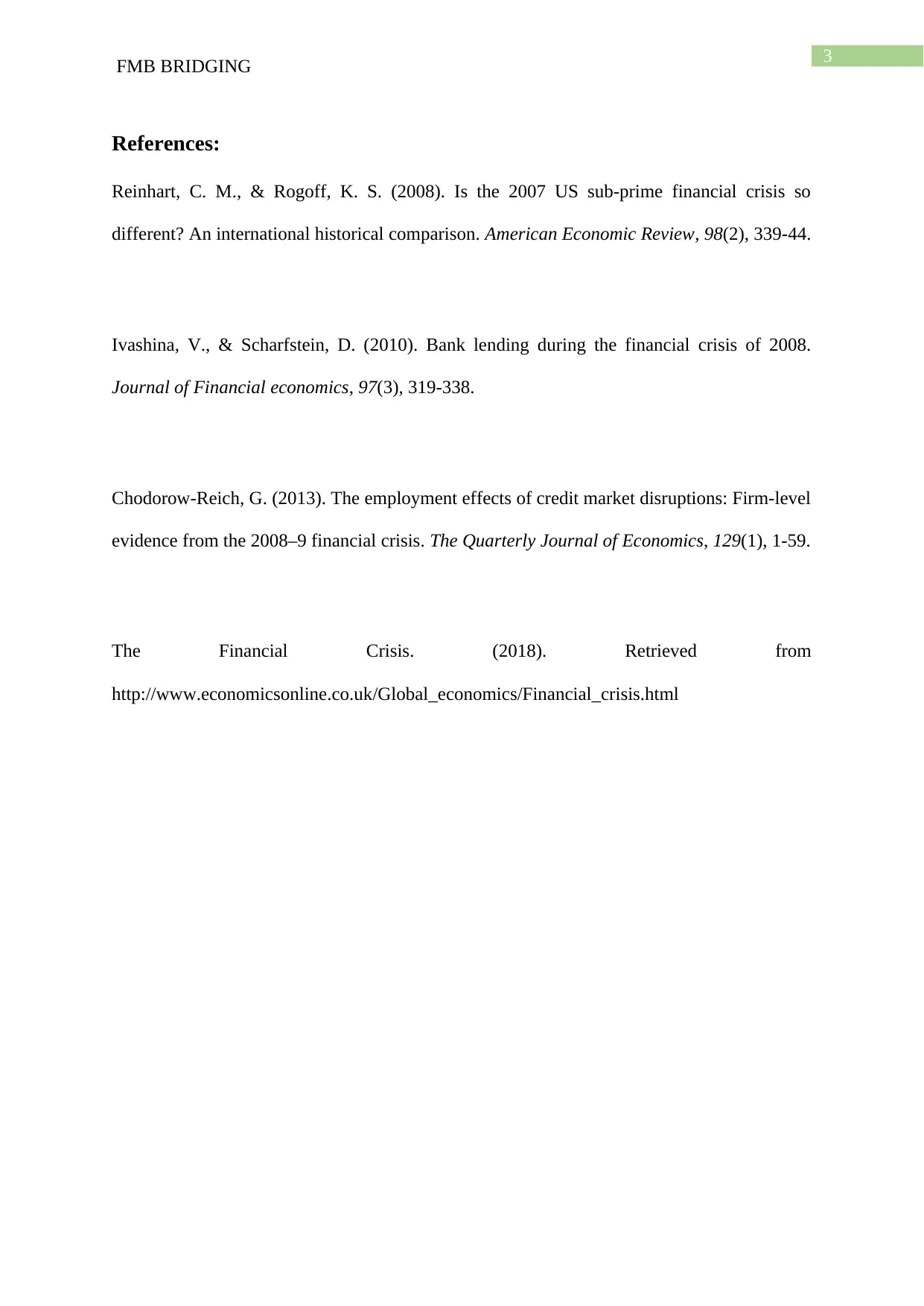Examining Asymmetric Information in the 2008 Global Financial Crisis
VerifiedAdded on 2023/06/10
|4
|611
|381
Report
AI Summary
This report examines the global financial crisis of 2008, tracing its origins to the US housing market and highlighting the critical role of asymmetric information. The crisis was exacerbated by factors such as the securitization of assets, the creation of complex financial instruments, and the rise of toxic assets, making it difficult to gauge the risks involved. Asymmetric information, where some parties in a transaction possess insufficient information compared to others, played a significant role in the crisis. The rise of intricate financial goods and the increased prominence of third-party managers further obscured the real risks, leading to a hidden problem when the mortgage market declined in 2007. The report references key studies to support its analysis of the crisis and its causes.
1 out of 4








![[object Object]](/_next/static/media/star-bottom.7253800d.svg)